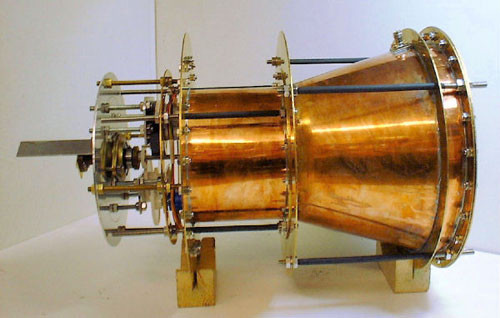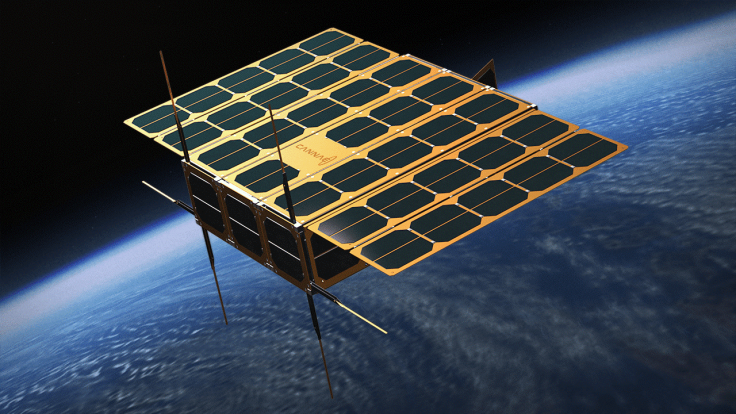EmDrive: Guido Fetta sending his Cannae Drive into space on a satellite to see if it works
Chemical engineer working on a similar space propulsion tech to EmDrive wants to demonstrate it in space.
When it rains EmDrive news, it pours. Now that the American Institute of Aeronautics and Astronautics (AIAA) has confirmed that it has indeed peer-reviewed a paper by Nasa Eagleworks scientists on the controversial space propulsion technology, another inventor wants to go one step further by seeking to test out his device in space.
The latest party in the long-running EmDrive saga is US chemical engineer Guido Fetta. Fetta's story runs parallel to the main EmDrive storyline starring UK scientist/engineer Roger Shawyer, who came up with the concept in 1999. In 2006, Fetta designed a similar version of the propellant-less microwave thruster, known as the "Cannae Drive" or "Q Drive", and he has been promoting it through his company Cannae LLC since 2011.
Fetta has announced that he wants to put his Cannae Drive thruster into a cube satellite and launch it into a low Earth orbit, with an altitude of less than 150 miles. The cubesat will be left in space for at least six months and serve as a real-life demonstration that a propellant-less rocket engine can work and keep a satellite in space.
"Cannae's thruster technology is capable of generating thrust from a few uN up through several newton thrust levels and higher levels. The Cannae thruster technology is particularly useful for small satellite missions due to its low power, mass and volume requirements. Our thruster configuration for the cubesat mission with [new sister company] Theseus Space Inc is anticipated to require less than 1.5 U volume and will use less than 10 watts of power to perform station keeping thrusting," Cannae LLC states on its website.
"Once demonstrated in orbit, Theseus will offer our thruster platforms to the satellite marketplace."

Competing to be first to commercialise microwave thruster technology
Shawyer and Fetta's stories diverge down two separate paths, because while Shawyer was busy carrying out research for the UK government – which was classified for 10 years until August 2016 – Fetta had convinced Nasa Eagleworks (the team behind the latest paper) to test out his Cannae Drive.
The researchers reported that they observed positive net thrust in the Cannae Drive in a paper entitled "Anomalous Thrust Production from an RF Test Device Measured on a Low-Thrust Torsion Pendulum", which was presented at the 50<sup>th AIAA/ASME/SAE/ASEE Joint Propulsion Conference in July 2014.
At the same conference, Fetta also presented his own research, entitled "Numerical and Experimental Results for a Novel Propulsion Technology Requiring no On-Board Propellant", which explains his theory.
Fetta went quiet after these conferences, but it now seems that the EmDrive is garnering renewed attention in the media and from academics globally, with the peer-reviewed paper news even highlighted by Science. Accordingly, Fetta is looking to ride this wave too.

What's the difference between the EmDrive and the Cannae Drive?
What can the EmDrive be used for, and why is it so controversial?
If its potential could be realised, Roger Shawyer believes EmDrive could transform the aerospace industry and potentially solve both the energy crisis and climate change by making it much cheaper to launch satellites and spacecraft into orbit, as well as helping to extend the operational lifetime of satellites.
If you could get more satellites into space, some of them could be used to harness solar energy or to act as a shield against global warming. The technology would also make space travel much faster (but not warp speed fast) and make flying cars feasible.
However, Shawyer's critics say that according to the law of conservation of momentum, the EmDrive cannot work as in order for a thruster to gain momentum in one direction, a propellant must be expelled in the opposite direction, and the EmDrive is a closed system.
Despite this, Shawyer claims that following fundamental physics involving the theory of special relativity, the EmDrive does in fact preserve the law of conservation of momentum and energy.
The EmDrive, unlike conventional space rocket engines, doesn't require any kind of propellant (also known as a reaction mass) to make propulsion possible. The idea is that electricity is converted into microwaves, and the microwave photons are fired into a truncated cone-shaped closed metal cavity. When fired into the cavity, the microwave photons push against the large end of the cone, causing the small end to accelerate in the opposite direction.
The Cannae Drive also features an asymmetrical cavity, but is flatter than the EmDrive. According to Fetta, it works by deriving force from a reduced reflection coefficient at one of the device's end plates, due to imbalances in the Lorentz force (a combination of electric and magnetic force on a point charge due to electromagnetic fields). Nasa Eagleworks, on the other hand, suggests that the Cannae Drive works by the cavity pushing against a "quantum virtual plasma" of particles that shift in and out of existence.
And of course, Shawyer considers his invention to be better than Fetta's – he told Wired in 2014 that he believes that the Cannae Device produces much lower thrust than the EmDrive because the Cannae Drive's design has the unwelcome side effect of degrading the electrically charged particles in the cavity.
Who will be first to prove the propellant-less microwave thruster works?
If Fetta can get his thruster into space, prove that it can keep the cubesat in orbit for at least six months and publish research about it, he could Shaywer's thunder. The Briton is now working with an unmaned private UK aerospace company on developing the second generation of EmDrive (let's call it EmDrive 2.0), which will produce many orders of magnitude more thrust than any device currently in existence.
However, Nasa has yet to officially validate either space propulsion technology, and considers Eagleworks to be a sort of "moonshot" experimental laboratory for investigating fringe theories in advanced propulsion physics. It will probably take many more tests from Nasa and other groups of scientists before the technology gets taken seriously.
© Copyright IBTimes 2025. All rights reserved.






















